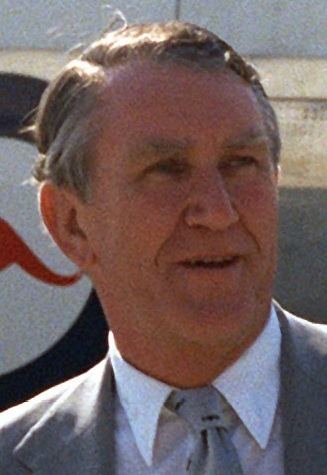18 October 1980 1983 → 86 seats 38 seats 12 13 | 21 March 1975 22 December 1977 74 seats 51 seats 50.40% 49.60% | |
 | ||
Federal elections were held in Australia on 18 October 1980. All 125 seats in the House of Representatives, and 34 of the 64 seats in the Senate, were up for election. The incumbent Liberal Party of Australia led by Malcolm Fraser with coalition partner the National Country Party led by Doug Anthony was elected to a third term in government, defeating the Australian Labor Party led by Bill Hayden.
Contents
Results
Independent: Brian Harradine
Seats changing hands
Issues and significance
The Fraser Government had lost a degree of popularity within the electorate by 1980. The economy had been performing poorly since the 1973 oil shock. However, Hayden was not seen as having great electoral prospects. Perhaps as evidence of this, then ACTU President Bob Hawke (elected to Parliament in the election as the Member for Wills) and then Premier of New South Wales Neville Wran featured heavily in the campaign, almost as heavily as Hayden.
In the election, Labor finished only 0.8 percent behind the Coalition on the two-party vote—a four-percent swing from 1977. However, due to the uneven nature of the swing, Labor came up 12 seats short of a majority, giving the Coalition a third term in government. Hayden, however, did manage to regain much of what Labor had lost in the previous two elections. Notably, he managed to more than halve Fraser's majority, from 48 seats at dissolution to 23.
In the subsequent term, the government delivered budgets significantly in deficit, and Fraser was challenged for the Liberal leadership by Andrew Peacock. The Australian Democrats made further gains, winning the balance of power in the Senate. From July 1981 (when those senators elected at the 1980 election took up their positions) no Federal Government in Australia had a Senate majority until the Howard Government won such a majority in 2004.
